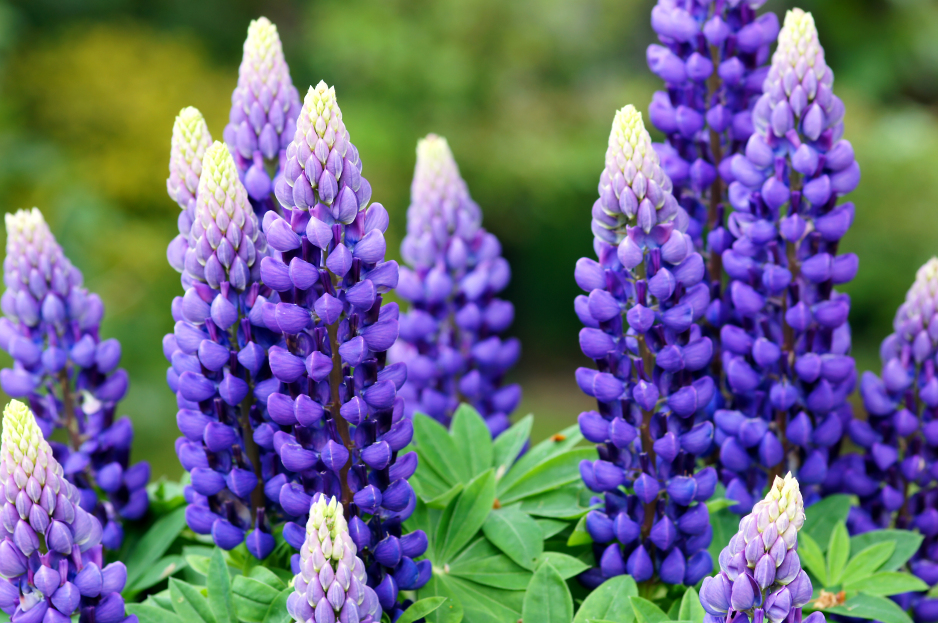
Lupins (Lupinus spp.) are striking, spire-shaped flowering plants known for their vibrant colors and ability to attract pollinators like bees and butterflies. With blooms ranging from deep purples and blues to reds, yellows, and whites, lupins add vertical interest and bold color to any garden bed or border. These hardy perennials are relatively easy to care for and thrive in the right conditions. Whether you're growing them in a cottage garden or as a pollinator-friendly feature, here’s how to keep your lupins healthy and blooming beautifully.
Lupins love the sun. They grow best in full sunlight, where they can receive at least six hours of direct sun each day. In areas with very hot summers, they may benefit from some light afternoon shade to prevent stress on the foliage.
These plants prefer well-draining, slightly acidic to neutral soil (pH 6.0–7.0). Lupins don’t thrive in heavy clay or waterlogged conditions, so improve drainage by amending soil with compost, sand, or organic matter if needed. Avoid overly rich soil, as this can lead to excessive foliage growth and fewer flowers.
Lupins enjoy moderate watering. Keep the soil evenly moist during the growing season, especially during dry periods, but allow the top inch of soil to dry out between waterings to prevent root rot. Once established, lupins are relatively drought-tolerant but will bloom best with consistent moisture.
Lupins thrive in cooler climates and are well-suited to USDA zones 4 through 8. They may struggle in areas with hot, humid summers, where fungal issues can become a problem. In these regions, ensure they have good air circulation and avoid overhead watering to reduce leaf moisture.
Lupins are nitrogen-fixing plants, meaning they can extract nitrogen from the air and enrich the soil. Because of this, they typically don’t need much fertilizer. Too much nitrogen can actually reduce flowering. If desired, apply a balanced, low-nitrogen fertilizer in early spring to support blooming.
To encourage repeat blooming and prolong the flowering season, deadhead spent flower spikes promptly. This prevents the plant from putting energy into seed production and promotes new flower development. In late fall, once the foliage has died back, you can cut lupins down to the base.
Lupins can occasionally suffer from aphids, slugs, or snails. Inspect your plants regularly and remove pests by hand or use natural deterrents like neem oil or diatomaceous earth. Fungal issues such as powdery mildew and downy mildew can occur in humid conditions — improve air circulation and avoid wetting the foliage when watering to prevent these problems.
Lupins can be propagated from seed or divided in early spring or fall. While they will self-seed in the garden if left alone, growing from seed can result in variable flower colors. To maintain specific cultivars, division of mature clumps every few years is recommended.
Lupines contain alkaloids that are known to be toxic to humans and animals. Though toxicity has been predominantly noted in livestock, the danger of poisoning in dogs is a possibility, therefor keep your pets away from Lupins